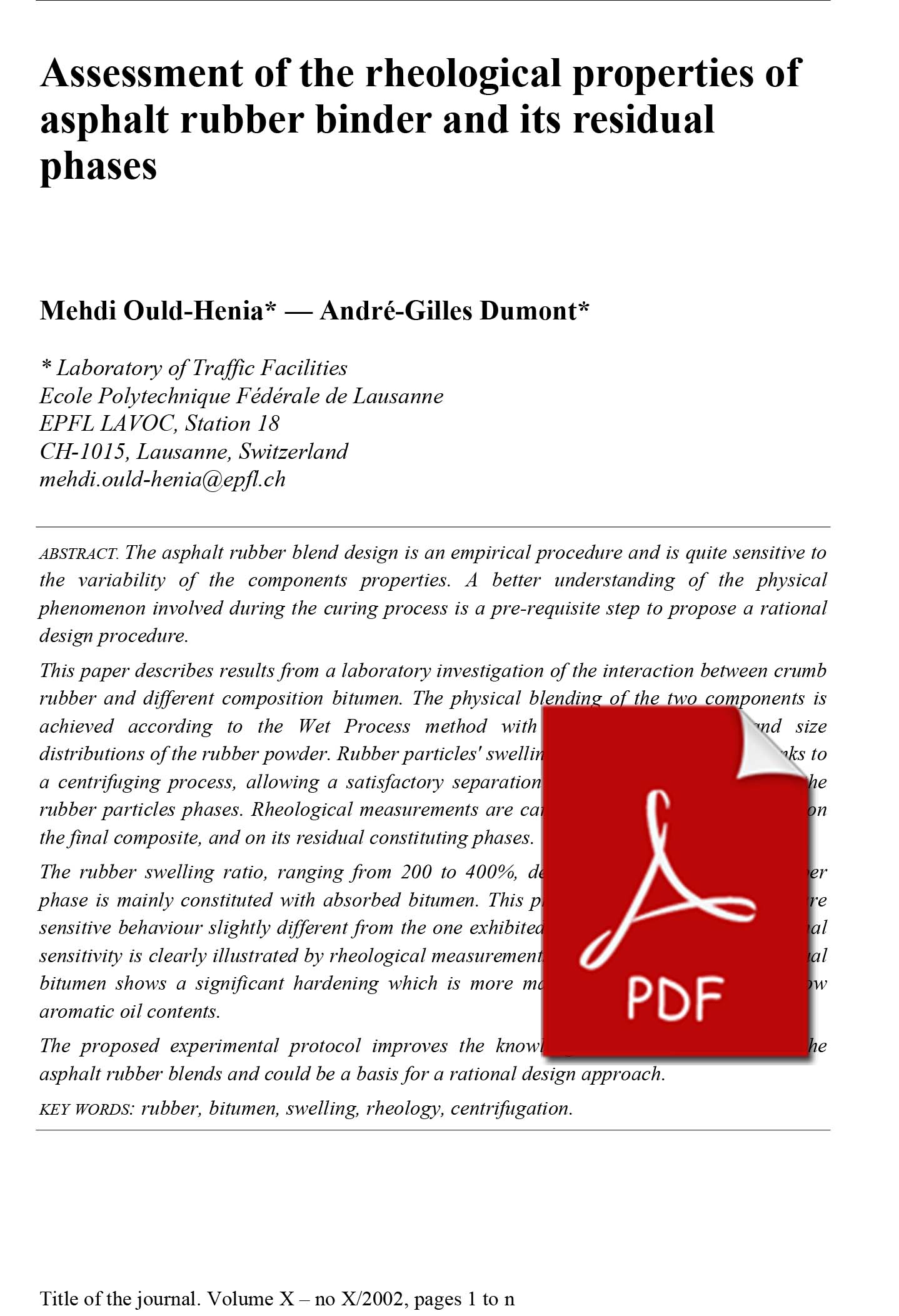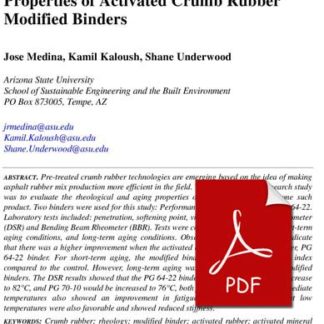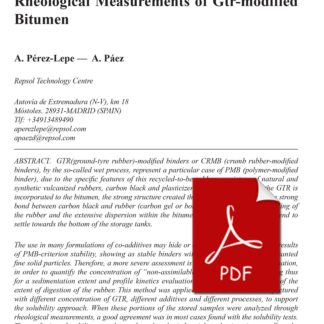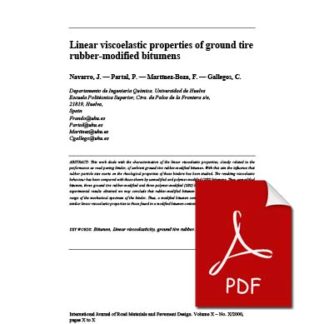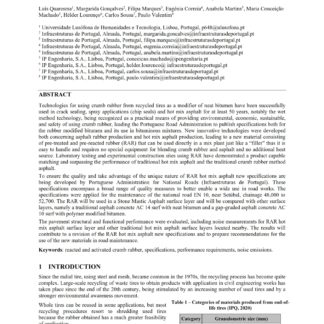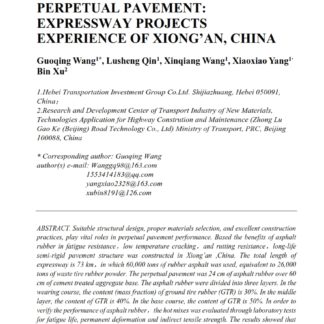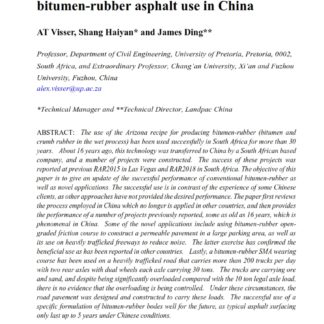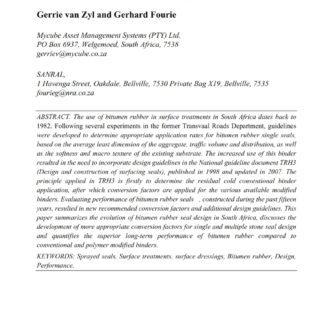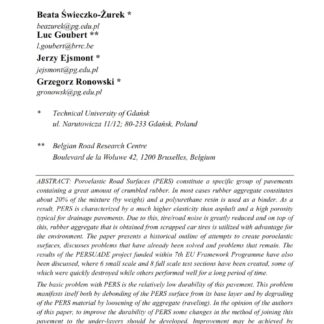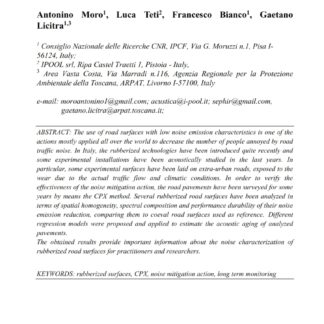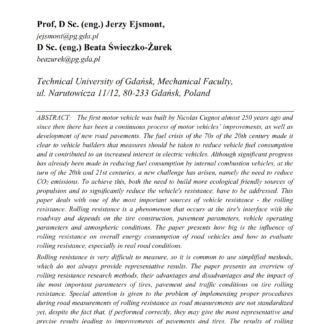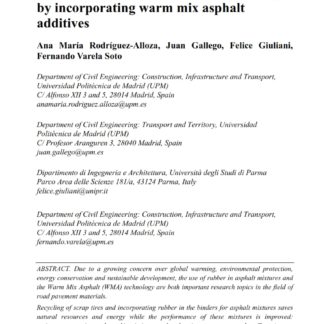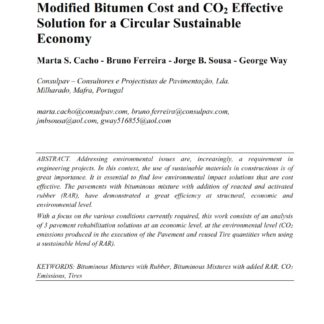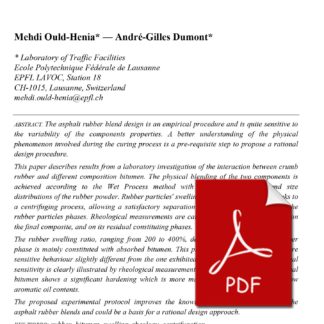Description
The asphalt rubber blend design is an empirical procedure and is quite sensitive to the variability of the components properties. A better understanding of the physical phenomenon involved during the curing process is a pre-requisite step to propose a rational design procedure.
This paper describes results from a laboratory investigation of the interaction between crumb rubber and different composition bitumen. The physical blending of the two components is achieved according to the Wet Process method with different proportions and size distributions of the rubber powder. Rubber particles’ swelling in bitumen is assessed thanks to a centrifuging process, allowing a satisfactory separation of the residual bitumen and the
rubber particles phases. Rheological measurements are carried out on base components, on the final composite, and on its residual constituting phases.
The rubber swelling ratio, ranging from 200 to 400%, demonstrates that the final rubber phase is mainly constituted with absorbed bitumen. This phase shows a higher temperature sensitive behaviour slightly different from the one exhibited by the base rubber. The thermal sensitivity is clearly illustrated by rheological measurements. On the other hand, the residual bitumen shows a significant hardening which is more marked for base bitumen with low
aromatic oil contents.
The proposed experimental protocol improves the knowledge on the interactions in the asphalt rubber blends and could be a basis for a rational design approach.

